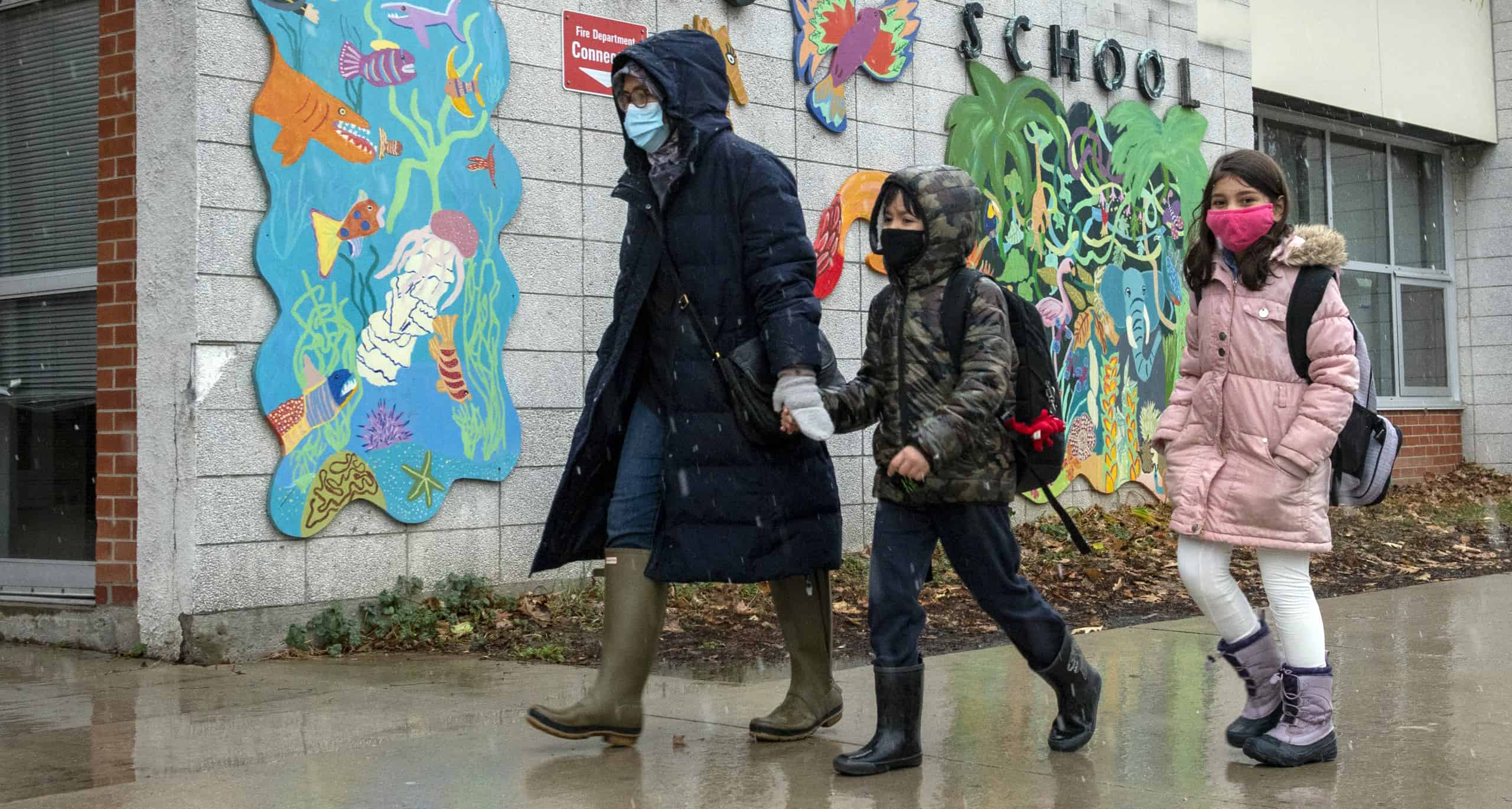Ontario back to school delayed until Wednesday, changes coming to COVID-19 testing and isolation guidelines
Published December 30, 2021 at 1:55 pm

Ontario has pushed the back-to-school start date to Jan. 5 and announced changes to testing, isolation and indoor capacity requirements due increased COVID-19 cases across the province.
The province is also limiting who can access publicly funded PCR tests to ensure supply can keep up with demand.
The province announced Thursday that the holiday break for classes is being extended to Wednesday, scrapping plans to resume classes on Monday in much of the province.
Ontario’s chief medical officer of health Dr. Kieran Moore said the province will deploy an additional 3,000 HEPA filter units to school boards on top of the 70,000 units already sent out, and school staff will also be given N95 masks.
Starting in January, the province will temporarily permit only low-contact indoor sports and safe extra-curricular activities in schools to help prevent the spread of COVID-19.
COVID-19 reporting requirements for school boards and childcare settings will be updated in January.
The province is also aiming to hire more than 2,000 additional school staff, funded by a $304 million allocation for second semester that includes additional teachers, custodians, and mental health workers.
RELATED: Ontario study of COVID-19 cases suggests Omicron not as severe as Delta
Starting on Friday, PCR testing will be limited to only certain high-risk individuals.
Members of the public with mild symptoms are asked not to seek testing, and a full list of eligible individuals can be found here.
More indoor seating capacity limits are coming in concert venues, arenas and theatres starting on Friday. Capacity limits will be limited to 1,000 people or 50 per cent capacity, depending on which is smaller.
The changes come as the province set another record for new coronavirus infections on Thursday with 13,807 new cases reported and eight more deaths. The previous record was just one day earlier with a count of 10,436 new cases and three new deaths on Wednesday.
Moore said doubling time for the Omicron variant is approximately three days, but the province has not seen a corresponding rapid increase in hospitalizations due to the variant’s spread.
He said there are 200 people in Ontario ICUs due to COVID-19 critical illness.
Moore credited vaccines and vaccine uptake in the province, along with Omicron’s seemingly less severe effects, with keeping ICU admission down.
A new study on Ontario COVID-19 cases suggests the Omicron variant is less likely to cause hospitalization or death than the Delta variant, but could still significantly impact health-care systems due to its high transmissibility.
INsauga's Editorial Standards and Policies